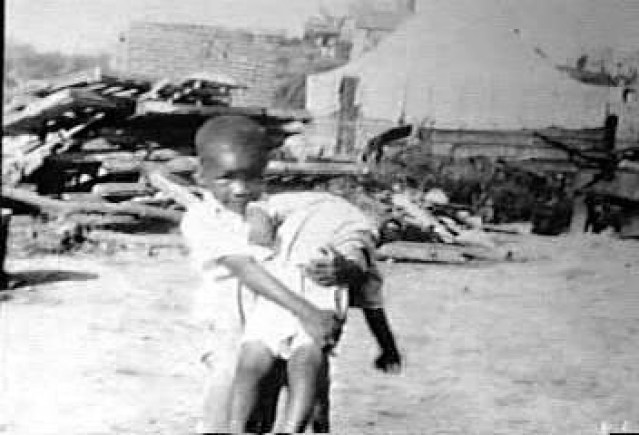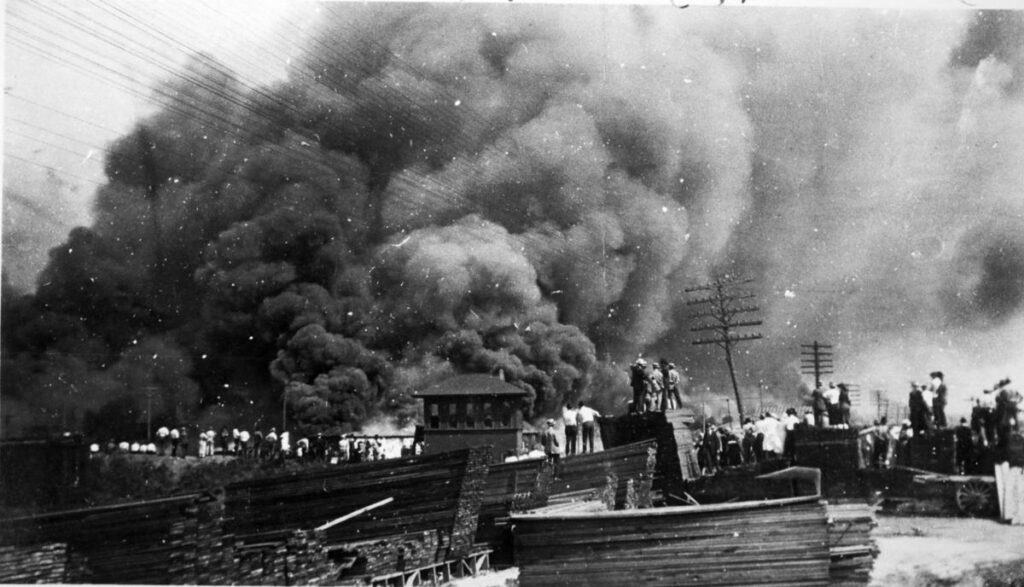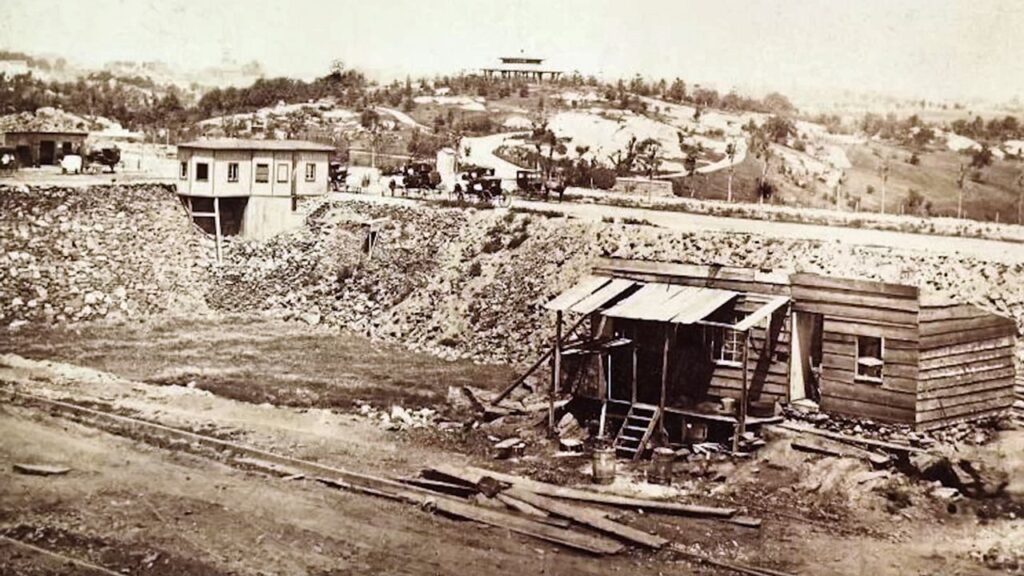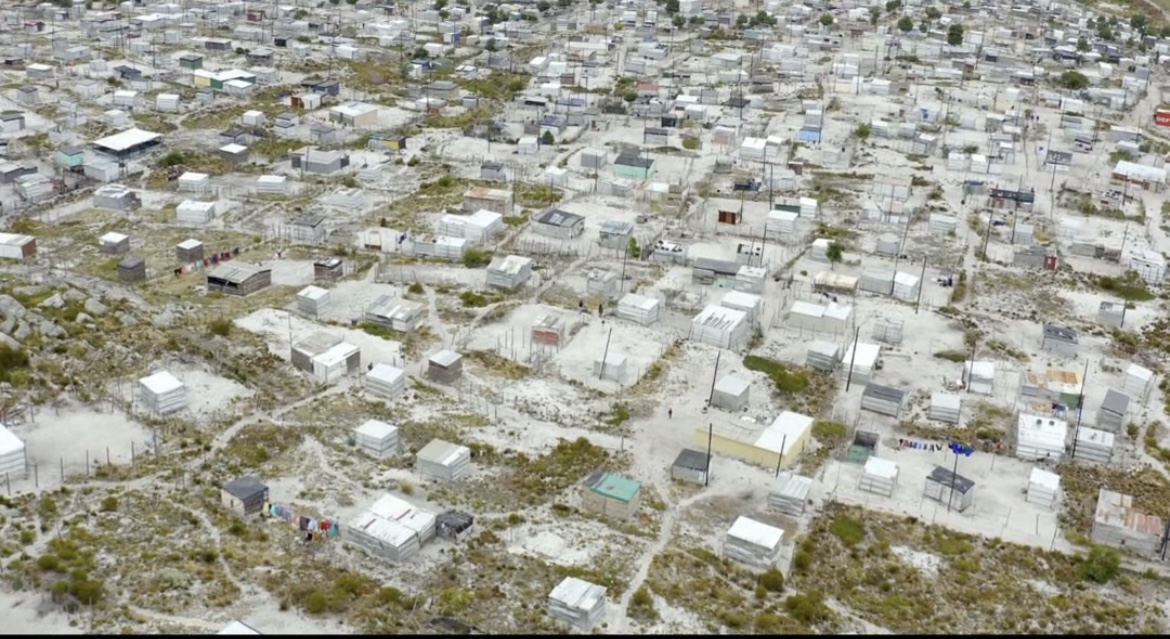
During October, people celebrate the spooky holiday of Halloween. There are trick-or-treating, pumpkin patches, and horror films. Black American history is full of tragedy and real-life horror scenes. Tulsa Race Massacre and the destruction of Seneca Village are two of our history’s worst tragedies where black people were slaughtered and their properties were stolen from them.
The Tulsa Race Massacre
Families in Tulsa, Oklahoma are still reliving a real-life horror in their history where several black residents were slaughtered. The Tulsa Race Massacre is one of the worst episodes of racial violence in U.S. history. There still is not a confirmed number, but historians believe as many as 300 black people were killed during the massacre. 40 blocks of the community Greenwood District were also burned.
The community was known as “Black Wallstreet.” Thousands of Black Tulsa, Oklahoma residents had built a self-sustaining community that supported hundreds of Black-owned businesses. The community had its own offices for doctors, lawyers and dentists. It had its own school system, post office, a savings and loan bank, hospital, and bus and taxi service. Greenwood also had its own entertainment area. It had luxury shops, restaurants, movie theatres, a library, pool halls and nightclubs. This area was also home to the 54-room Stradford Hotel, the largest black-owned and operated hotel in America. The hotel featured a dining hall, gambling hall, saloon, and regular Jazz performances. According to Forbes, Stradford Hotel would have valued at roughly $75,000, which is over $1 million in today’s dollar had it not been destroyed in 1921.

Beginning on May 30, 1921, a young black man named Dick Rowland was riding in the elevator with a white woman named Sarah Page. It was rumored that Sarah had allegedly been assaulted by Dick while they were in the elevator. Tulsa police arrested Rowland the following day and white residents called for him to be hung. This sparked tension between black and white residents and mobs railed around the courthouse. Shots were fired and the outnumbered African Americas began retreating to their community in the Greenwood District. Once the violence erupted more than 800 people were treated for injuries and the reports of deaths began at 36. Bodies were buried by strangers in mass graves while the victims’ families were detained under martial law.
In 2018, Tulsa Mayor G.T. Bynum ordered the city to search for potential mass graves after a Washington Post story detailed the unresolved questions surrounding the massacre. Up until the present, Tulsa is still trying to recover missing bodies. On October 18, a second excavation began at a cemetery in an effort to identify victims. A mass grave was found where the archaeologist had been searching. CNN reported that at least 10 coffins were found at the Oaklawn Cemetery in Tulsa, Oklahoma. The citizens and relatives of the Tulsa massacre just want closure and recognition of their loved ones who lost their lives on that horrific day.
The Annihilation of Seneca Village
In the mid 19th century, New York City decided it needed a park. It was a generous chunk of land that stretches 840 acres. The park is now what many know now as Central Park. By the time the decision to create a park was made, there wasn’t enough empty space to accommodate the original blueprint. So, the city chose a stretch of land called Seneca Village.
Seneca Village had a population of 264 people made up primarily of African American and Jewish citizens. The village was established in 1825. There were over 50 homes, three churches and a school. Fifty percent of the African American residents owned the property they lived on. It provided residential stability, gave them an investment for their children’s future, and the right to vote.

Under the law of eminent domain, through which the government can take private land for public purposes, the city of New York took the land. Residents protested to the courts many times, against both the order and the level of compensation being offered for their land but eventually, they were forced to leave.
Since the 1990s, scholars and archeologists have been working to shed light on the history of the village. In 2011, a group called the Institute for the Exploration of Seneca Village History collaborated with Central Park Conservancy to conduct an excavation at the site.
These are just two examples of devastation black America has endured. Who knows what other catastrophe historians may uncover in the future that showcase the horrendous treatment of black people. While you curl up and watch horror films I hope you take a moment to remember the real-life terror others have had to endure.



